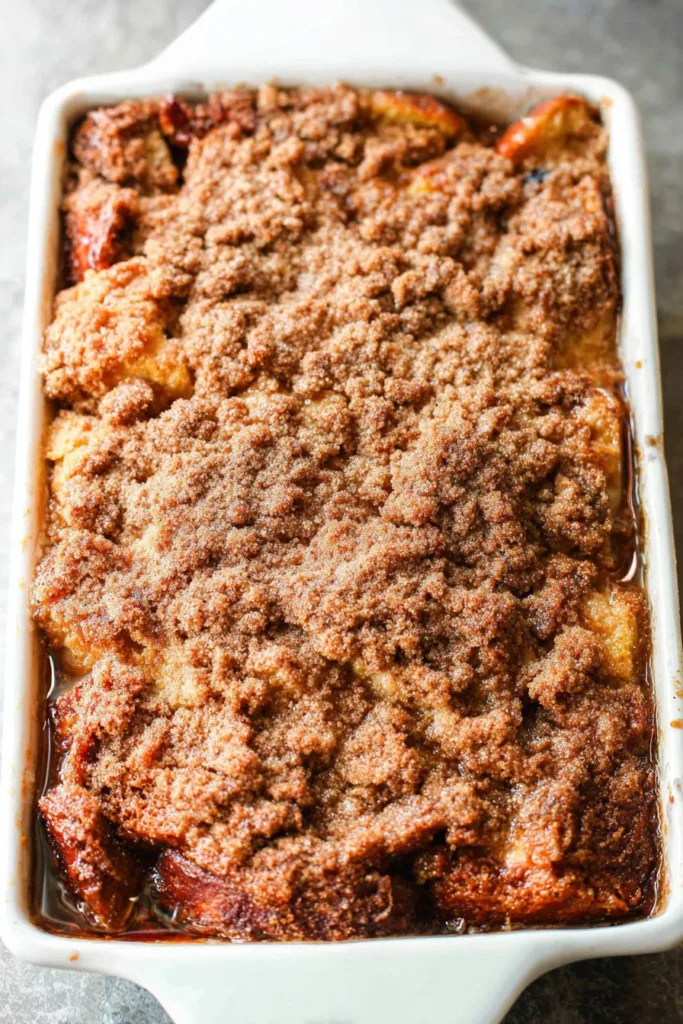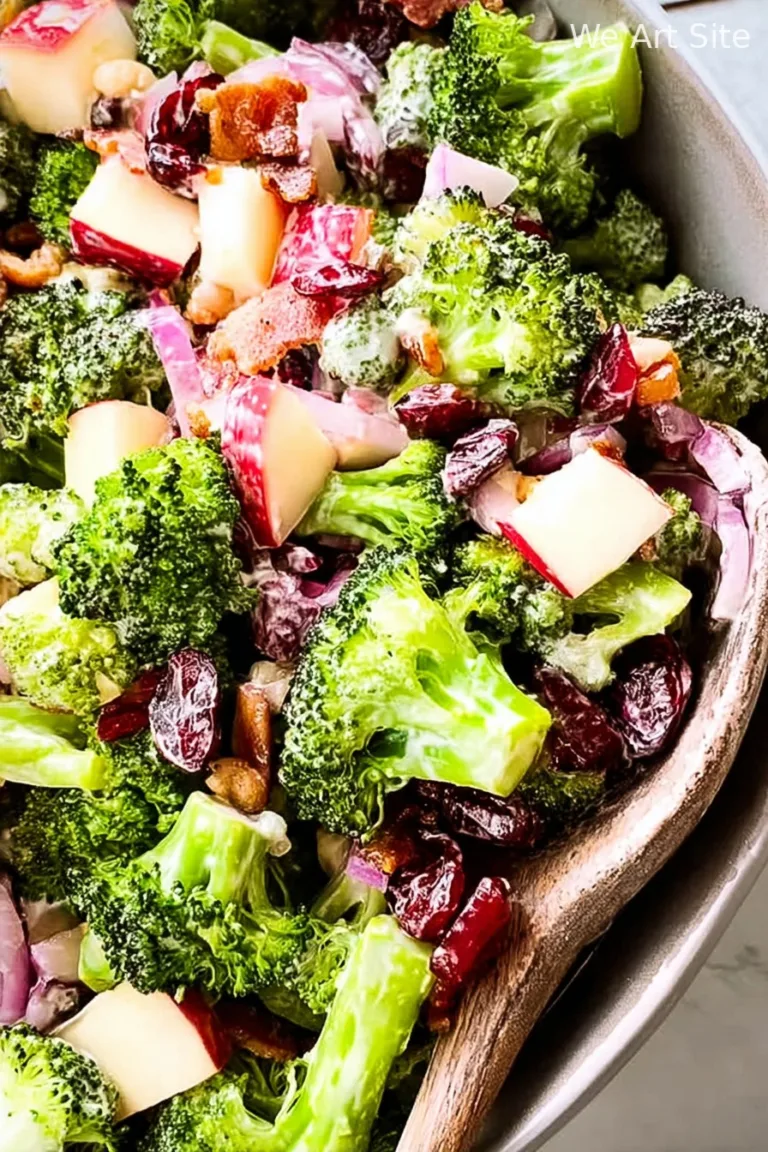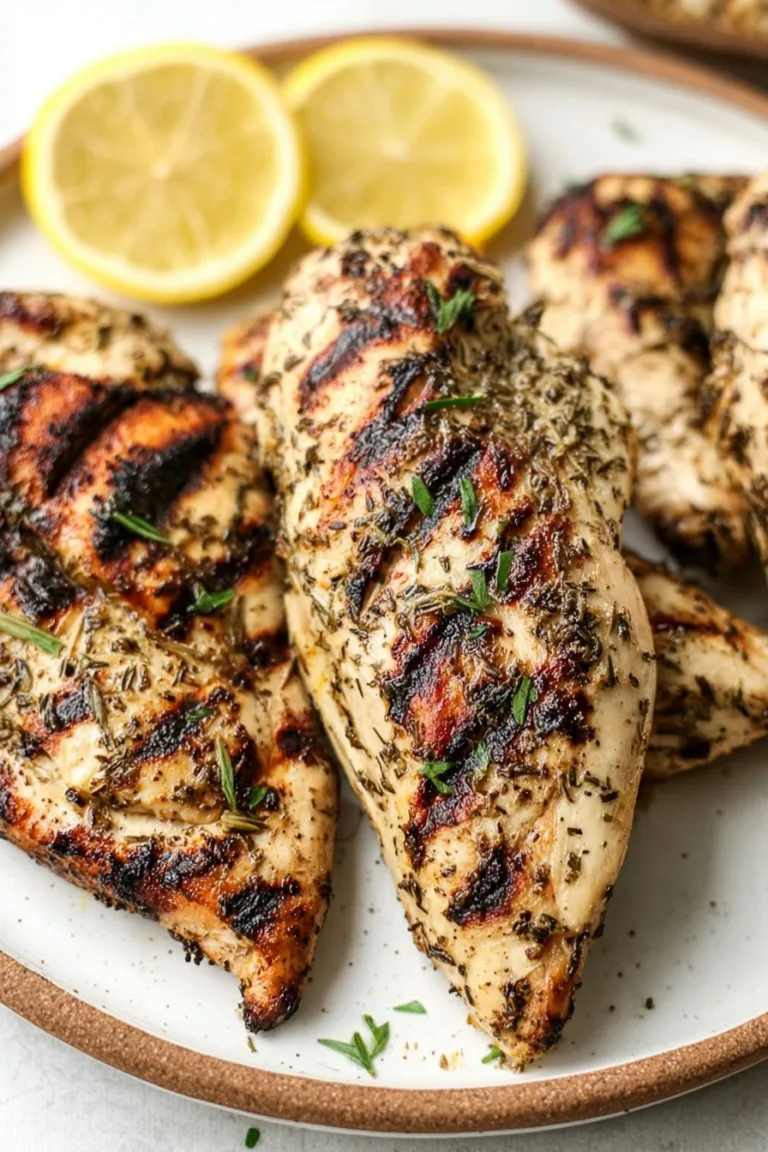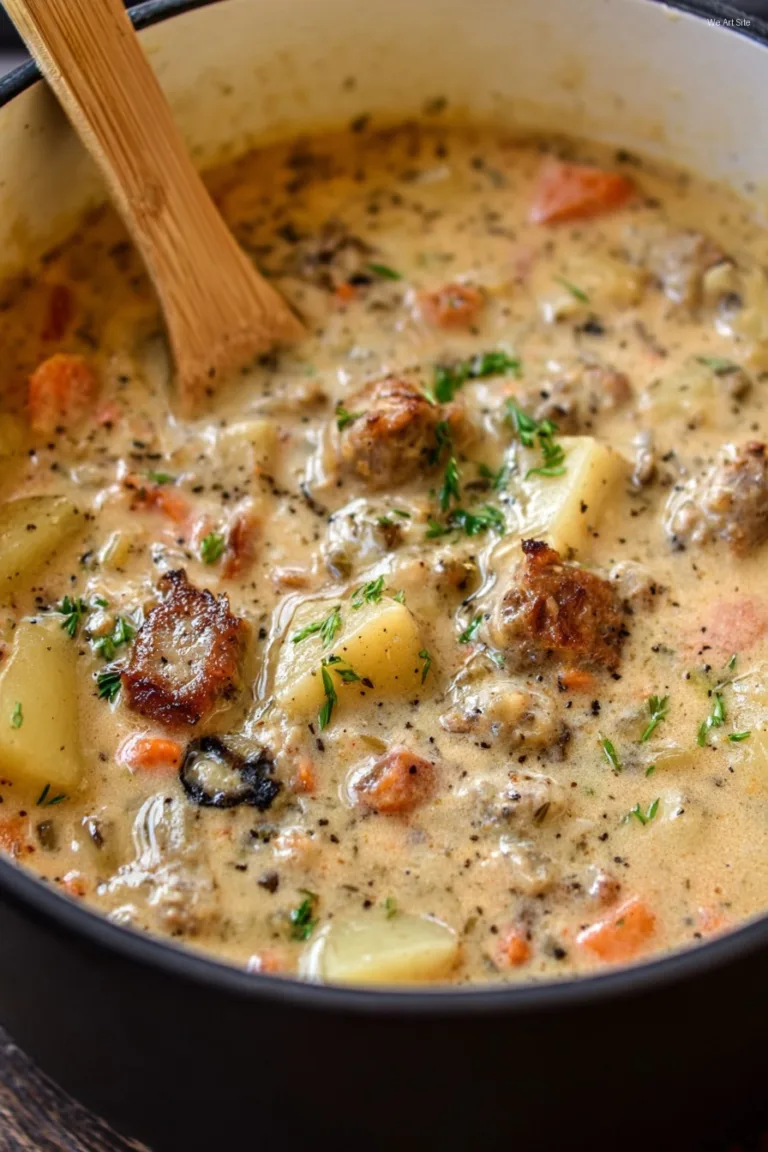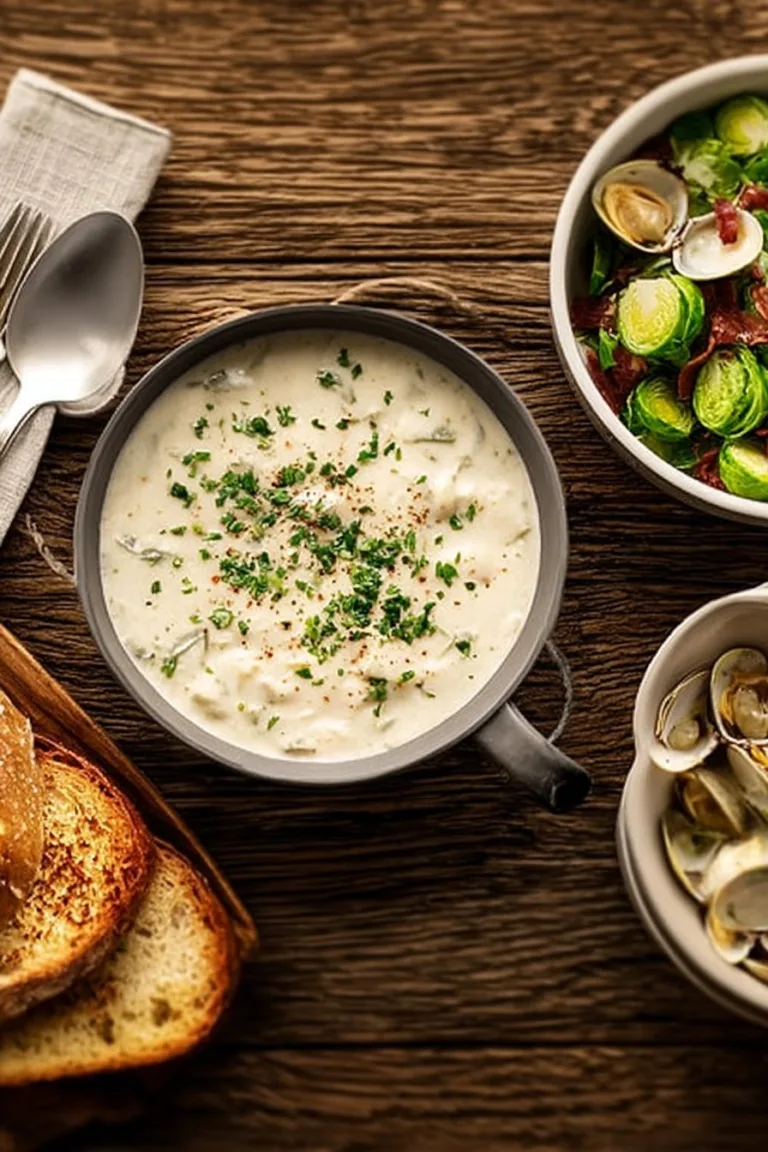I started making this French Toast Bake during a snow day when the power kept blinking and the kids were doing laps like tiny tornadoes. I tossed bread into a pan, whisked eggs like I meant it, and hoped for the best. It came out golden, puffy, a little custardy in the middle, and the whole kitchen smelled like a hug. Honestly, now I make it on random Tuesdays too, because who says you have to wait for the weekend to eat something that tastes like a cozy blanket? Also, if you catch me sneaking a corner while it cools, no you did not.
Why you will love this, or at least tolerate it
I make this when company is coming but I also want to chit chat instead of babysitting a skillet. My family goes wild for this because the top gets toasty and the inside stays soft, like bread pudding but brunchy. When mornings are chaotic, this is hands off; you pour, you bake, you sip coffee. If you have ever felt personally attacked by soggy French toast, same here, but we fixed it with a little trick. And if cinnamon makes your kitchen smell like a little bakery, well, you are in the right place.
What you need, roughly
- 1 large loaf day old bread, about 450 to 500 g. Brioche or challah is dreamy, but a sturdy country loaf works. I sometimes use thick sliced sandwich bread when I am in a hurry, just dry it in the oven a bit.
- 6 large eggs. If you only have 5, it is fine; add a splash more milk.
- 2 cups whole milk, plus 1 cup cream. Actually, I find it works better if the cream is at room temp.
- 1/2 cup sugar. I use half brown sugar for a deeper vibe; my grandmother always insisted on Brand X white sugar, but honestly any version works fine.
- 2 teaspoons vanilla extract. The good stuff if you have it. If not, no biggie.
- 2 to 3 teaspoons ground cinnamon, a pinch of nutmeg, and a pinch of salt. I sometimes grate fresh nutmeg because I am extra like that.
- 3 tablespoons melted butter, plus a bit for the pan.
- Optional but excellent: a handful of chopped pecans, a handful of blueberries, a few spoons of cream cheese in little dollops, or orange zest for that bright hello.
- To serve: maple syrup, powdered sugar, and a cheeky pat of butter.
Psst, if you want to nerd out on spices, I love this quick read on cinnamon varieties over at King Arthur Baking: cinnamon guide. It helped me suss out why some batches tasted warmer.
Step by step, sort of
- Prep the pan. Butter a 9 by 13 inch baking dish. I am generous because I do not want to scrape later.
- Cube the bread into bite sized pieces. If it is very fresh, spread on a tray and bake at 300 F for 10 minutes to dry it a smidge. Day old is ideal, I say its essential here, but on second thought if yours is fresh, that quick toast does the trick.
- Make the custard. In a big bowl, whisk eggs, milk, cream, sugar, vanilla, cinnamon, nutmeg, and salt until smooth but not foamy. This is where I usually sneak a taste, just a little. If it is overly bubbly, let it sit so the bubbles calm down.
- Combine. Tip bread into the custard and toss gently until everything is coated. Let it sit 10 to 20 minutes so the custard moves into the bread. Do not worry if it looks a bit messy at this stage, it always does.
- Pour into the pan, drizzle melted butter over the top, and tuck in any add ins you like. Pecans? Yes please. Blueberries? Toss a handful over like confetti.
- Rest or bake. For a make ahead plan, cover and chill overnight, then bake in the morning. Or, if you are impatient like me, let it sit on the counter 15 minutes and bake now. Both ways work.
- Bake at 350 F for 35 to 45 minutes until the top is deep golden and the center just barely jiggles. If it is browning too fast, loosely tent with foil. When you press the center, it should feel set but soft.
- Cool 10 minutes so it settles, then serve with maple syrup and powdered sugar. If the syrup drips over the crisp edges, that is the good stuff.
Tiny side quest: if you want to read why soaking matters and how custard actually behaves, the folks at Serious Eats really explain it well here: French toast deep dive. I learned that patient soaking beats frantic stirring every time.
Little notes I learned the messy way
- Bread matters. Soft sandwich bread soaks fast and can turn mooshy if you do not dry it first. Dense bread takes longer to drink up the custard, so give it time.
- Salt is not optional. A tiny pinch makes everything taste more like itself.
- If the center looks very wet at 40 minutes, give it another 5 to 10, but check the edges. I once kept baking and the edges went too hard while the middle was still shy; covering with foil earlier would have saved it.
- I used to pour all the butter into the custard, actually I find it works better if you drizzle half on top for crispy bits.
- That cinnamon sugar sprinkle on top before baking? It makes a delicate crust. Not required, but I grin every time.
Variations I tried so you do not have to
- Apple cinnamon: sauté sliced apples with a little butter and sugar until tender, then tuck them in before baking. Smells like you baked a pie and did not tell anyone.
- Chocolate hazelnut swirl: warm a few spoons of chocolate hazelnut spread and drizzle in ribbons. Rich, a bit fancy, very yes.
- Pumpkin spice: whisk 3 or 4 spoons of pumpkin puree into the custard with extra spice. This one is a fall morning slam dunk.
- Lemon blueberry: a spoon of lemon zest in the custard, blueberries on top. Bright and breezy.
- Savory attempt: I tried cheddar, scallions, and less sugar. It was fine, but the sweet custard base fought it, so I will not do that again. If you want savory, I would start with a different base entirely.
Gear I use
A sturdy 9 by 13 baking dish is my go to. I like a metal pan for crisp edges, though glass works and looks nice on the table. No whisk? A big fork and some determination will do. I call a silicone spatula essential for scooping, but if you only have a big spoon, that works too. If you are hunting for a reliable pan, I have used this one happily: OXO metal bakeware. And if you do not even have a baking dish, bake in a couple of loaf tins and rotate them halfway.
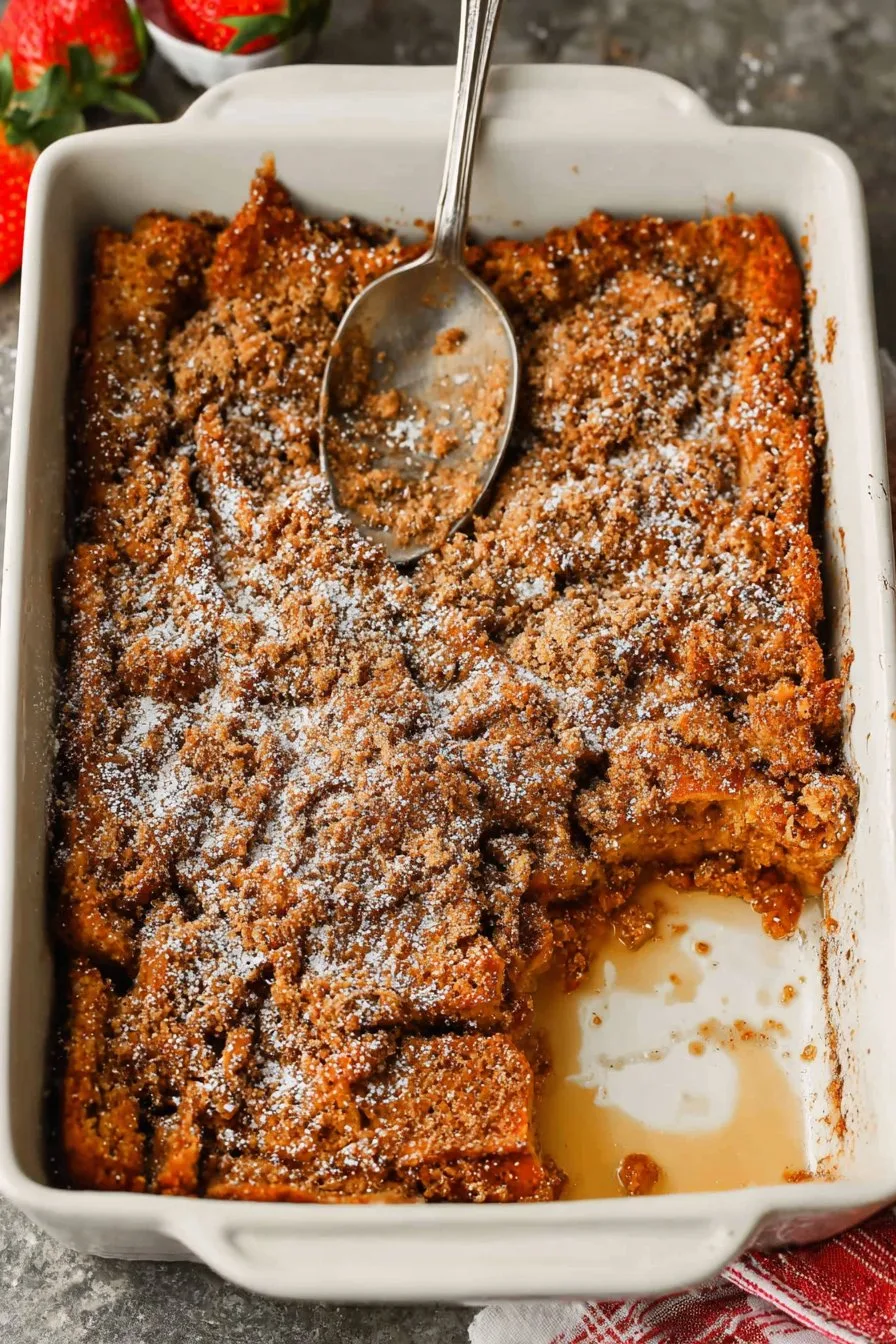
How to store and reheat
Cool leftovers, then cover and refrigerate up to 3 or 4 days. Reheat slices in a 325 F oven or toaster oven for 10 minutes until warm and a bit crisp again. You can freeze single portions, tightly wrapped, up to 2 months; thaw in the fridge and reheat as above. Though honestly, in my house it never lasts more than a day.
Food safety hat on for a sec: per the USDA, cooked egg dishes should not hang out at room temp more than about 2 hours. Here is a helpful reference if you like to double check me: USDA egg safety.
How we like to serve it
I dust with powdered sugar, drizzle maple syrup, and sometimes add a dollop of Greek yogurt for tang because balance. My crew votes for crispy bacon on the side, always. On holidays we set out little bowls of berries and chopped nuts so everyone builds their own plate, buffet style. If it is just me on a lazy morning, I take a quiet square, a hot mug, and a sunbeam if I can find one.
Pro tips I wish I knew earlier
- I once tried rushing the soak and regretted it because some bites were dry while others were custardy. Give it at least 10 minutes in the bowl, longer if the bread is sturdy.
- I once went heavy on milk to stretch the custard and it baked watery, so now I keep the milk to cream ratio as written.
- Do not overbeat the eggs. Too much foam means weird texture on top. Gentle whisking is enough.
- Grease the corners of the pan. I forgot once and had to chisel breakfast form the edges. Not my finest hour.
FAQ from real messages
Do I need stale bread? Stale is great because it soaks without collapsing, but if you only have fresh, dry it in a low oven for 10 minutes. Works a charm.
Can I make it dairy free? Yep. Use full fat coconut milk or almond milk with a spoon of neutral oil. It will be a touch less rich, still good.
What about gluten free bread? Totally fine. Choose a loaf that is a bit sturdy and let it soak a few extra minutes.
Can I assemble the night before? Please do. Cover and chill. In the morning, set it on the counter while the oven heats, then bake. If it looks very cold and firm, add 5 minutes to the bake.
How do I avoid soggy middles? Two things help. Dry the bread a bit and do not drown it in custard. Also bake until the center is just set. A tiny jiggle is fine, a slosh is not.
Can I halve the recipe? For sure. Use an 8 inch square pan and start checking around 28 to 32 minutes.
Air fryer? You can, in smaller batches. Use a small baking dish, 320 F, and check early. It browns fast.
Can I skip the sugar? You can reduce it to a couple spoons and rely on syrup later. Without any sugar at all, it tastes more like plain custard toast. Not bad, just different.
How do I know when its done? The top is deep golden and crisp, the edges are set, and the center has a gentle wobble. If you poke it lightly, it should spring back.
Alright, I think that is everything. If you make this French Toast Bake and your kitchen smells like a bakery that also tells jokes, we did it right. Save me a corner?

